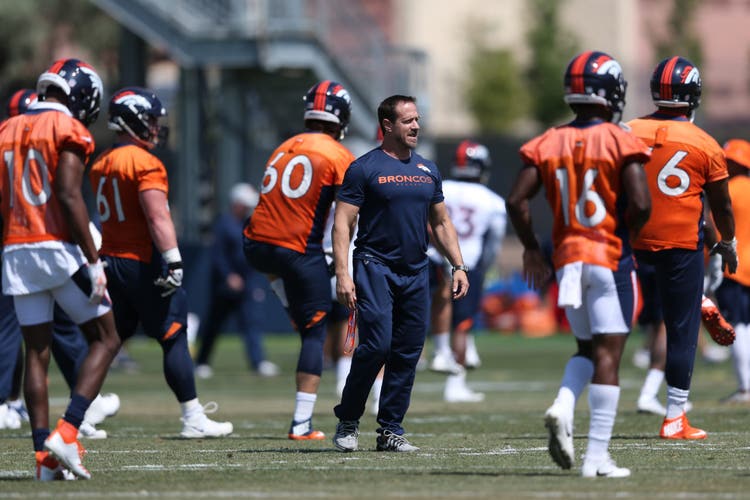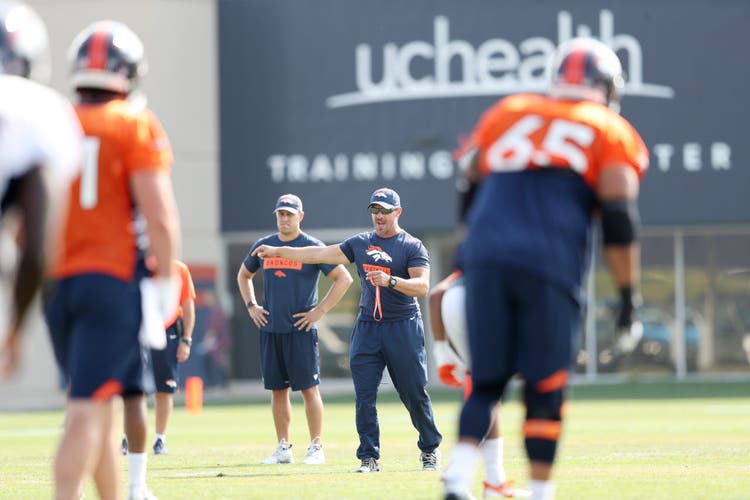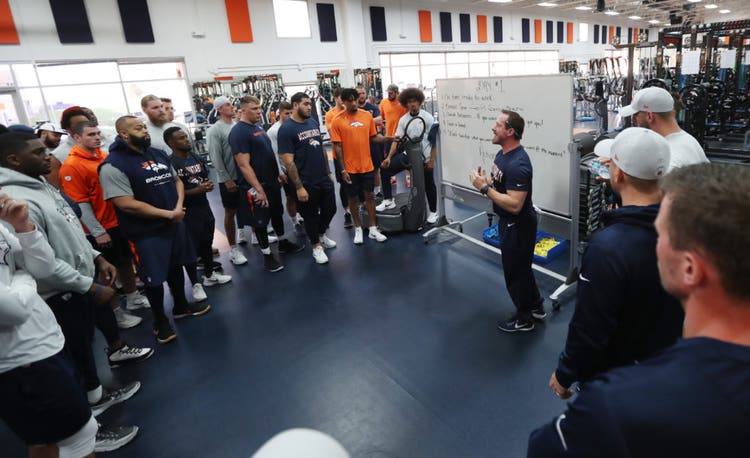The Strength and Conditioning Coach for the Denver Broncos Shares His Tips for Everyday Athletes

Autumn brings with it a number of seasonal markers: the changing color of the leaves, a chill in the air, the sun disappearing earlier and earlier, pumpkin spice lattes and football season.
Football players are incredible athletes. Their skill, their strength and their speed are all enviable athletic traits. But according to Loren Landow, head strength and conditioning coach for the Denver Broncos, the dynamic and methodical training that goes into honing these traits is important for everyday athletes, too.
Mobility, stability, core strength, recovery—we all need to be working on our own consistent strength and conditioning regimen. 24Life reached out to Landow to get his strength and conditioning advice for everyday athletes, as well as a behind-the-scenes look at the workout regimen of professional football players.
24Life: What made you pursue this career path and ultimately this coaching job?
Loren Landow: I have been in the field of human performance for 23 years, working with athletes of all sports and all levels of development. During this time, I have truly learned to appreciate the journey more than the destination. This has become a massive point I tell my athletes: We need to make sure that we stay “process-driven versus outcome-driven.” Growing up, I was an OK athlete. I was fast and explosive but had no real direction or understanding of how to develop those qualities into becoming a better athlete. Now my quest is simple: Give my athletes what I wish I had growing up—someone who could have given me a better road map to physical and mental development. As for being the head strength and conditioning coach for the Denver Broncos, it is a dream come true. In the performance field, becoming a strength and conditioning coach for an NFL team is a major goal, and it does not get any better than the Broncos.
24Life: You’ve trained more than 700 professional athletes—how do you approach training for each? Are there similarities in each training session that you believe are necessary to every body and athlete no matter their sport or lifestyle?
LL: I have been fortunate during my career path of being exposed to multiple sports, and even though from an outsider’s perspective all sports look so different, in all actuality, they are all very similar. Sprinting, jumping and change of direction are all skills needed for nearly all sports; the specificity of skill is truly the difference. My goal is simple: Make a stronger, faster, more explosive and better-conditioned athlete, and let the skills coaches teach them the specifics of the on-field task. A perfect metaphor is this: I am the “mechanic” for the vehicle, and the skills/position coaches work on the quality of the “driver” of that vehicle.
24Life: How often do Broncos players do strength and conditioning training—what does a typical week of workouts look like?
LL: The Broncos’ frequency of training changes depending on the time of year. In our offseason program, we work out four times per week. As the activity of football becomes higher, we pull back on the total volume in the weight room. During training camp, on-field work is the major priority, but we still try to manage three workouts per week and add in one to two regeneration days to help manage with the on-field fatigue yet preserve the strength gains made in the offseason. In season, we train two to three times, depending on the week—one of those days, we can change into a recovery session.

LL: Some of the best things to do that prepares our players for the physicality of the game include short explosive sprints, Olympic-lifting variations, plyometrics (jump training), quick change-of-direction drills and explosive medicine-ball throws. Truly, one of the best staples in our program that keeps our players healthy is our active dynamic warm-up and a core-stability series we do three to four times per week. The warm-up in itself provides good core activation while helping to decrease muscular imbalances that can lead to acute or chronic injury.
24Life: Do you have any strength and conditioning tips or advice for everyday athletes—any recommendations of things they can do to prepare and repair their body for the long haul?
LL: Consistency is the key. Implementing a program that covers all basis of mobility, stability, strength and conditioning. Staying healthy in the long haul key components are: 1) Listening to your body. When the body is tired or injured, listen to the warning signs. 2) Make sure that your program has some variety—this will help from becoming stagnate in training but can also reduce the likelihood of repetitive or overuse injury. 3) Be proactive with hydration and caloric intake throughout the day, but pay close attention pre- and post-workouts. 4) Make sure to include off days, de-load weeks and optimal recovery time during training—doing this will allow you to stay more consistent in your training throughout the year.
24Life: From your perspective, how crucial is technique when learning a challenging new skill?
LL: Technique is the most crucial aspect in training and is many times overlooked. Make sure that movement patterns are grooved well prior to adding load or repetition to the exercise. If someone has poor technical execution of an exercise, it does not typically get better with more weight.

24Life: How do you get players to comply when you ask them to make difficult changes to their regimen?
LL: Explaining the “why” is the most crucial aspect of buying into something new or different. Some athletes love to hear the science of “why,” but most want to know the “why” in a more simplistic aspect. If this is the case, metaphors and analogies tend to work really well.
24Life: What are some things football fans may be surprised or interested to learn about how football players train for their sport?
LL: The most impressive aspect is how quickly these players can recover after intense practices and games. The pure speed of the game on the field level is truly something that cannot be described, and it further shows me why these players are the best speed and power athletes in the world.
Photo credit: Gabriel Christus, Courtesy of Denver Broncos